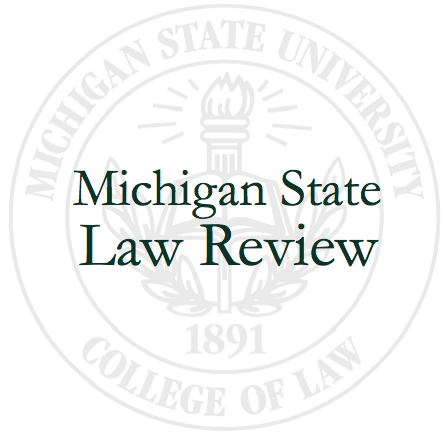Vol. 2022-2023 of the MSLR Forum is Edited by
Niko Spilson
Online Forum Editor
With Support by
Claire Moore & Sam Weiser
Co-Chairs of the Online Forum Committee
Major Questions and the Ecosystems of Regulatory Jurisprudence
In a recent essay and longer companion piece, Professor Jim Chen traces the origins and development of the Supreme Court’s recently coined “major questions doctrine.” He trenchantly criticizes the doctrine on numerous grounds, including that federal courts have seized authority to make policy decisions that are better resolved by administrative agencies with greater technical and subject matter expertise. Chen also draws on lessons from the biological sciences to argue that the major questions doctrine modifies the ecosystem of regulatory jurisprudence in ways that could lead to both Chevron’s and textualism’s extinction. And while I agree that the Court has harmed both Chevron and textualism, such assessments are complicated by the highly complex and diverse nature of regulatory jurisprudence’s ecosystem(s).
Scalia’s Major Mousetrap: The Modest Origins of the Major Questions Doctrine
The rhetoric if not the reasoning of the Supreme Court’s newly recognized “major questions doctrine” originates in the jurisprudence of Justice Antonin Scalia. The major questions doctrine rests on little more than Justice Scalia’s exercises in Latin etymology and his felicitous announcement that Congress “does not . . . hide elephants in mouseholes.” This doctrine threatens to eclipse textualist statutory interpretation. Textualism, which had long lived by the ipse dixit, now dies by the ipse dixit. But one must mourn for the Constitution. Justice Scalia’s major mousetrap comes not as a mouse, but as a wolf.
Displaying and Evidencing Contract Terms in a Post-Visual Era
Technological developments increasingly force us to reconsider core assumptions and approaches. How will we make contract terms available and accessible in understandable ways when contracting happens in a non-visual context? How will we evidence and document agreements without visual forms of contracts? Will our approaches change how we contract in the visual world? In this article, I consider these questions, given the history of contracting and the issues new technologies have raised, and review some promising current and future approaches to addressing problems posed by traditional contract delivery methods when they meet new and evolving technologies.
Holding Independent Certification Firms Responsible for Their Misrepresentations
Certification of foreign materials may come from a firm sponsored by the U.S. government or from an independent firm. The certification is important for U.S. builders; it tells the builders whether the material is up to building codes across the country. There is no national standard for plywood, thus independent firms are able to issue their own certifications. If it was found that the plywood was intentionally or negligently certified, builders could rely on that certification, causing faulty plywood to make its way into U.S. construction. When a builder relies on an independent certification firm to designate the quality of materials, and the certification turns out to be faulty—whether intentionally or negligently—the builder should not be liable to the owner for breach of warranty. Instead, the certification firm should be liable for either actual or constructive fraud in the certification of the materials.
Due Process and Equal Protection in Michigan Anishinaabe Courts
This essay opens with a short description of why tribal governments have the duty and opportunity to interpret the obligations to provide “due process” and guarantee “equal protection” to persons under tribal jurisdiction. The next part delves into federal and state interpretations of those principles. The third part introduces and summarizes some Anishinaabe legal philosophies. The final part offers suggestions on how those legal philosophies can be used by tribal governments to interpret “due process” and “equal protection” in light of Anishinaabe culture.
The NCAA Gave Mental Health the Old College Try and Failed: Why Federal Regulation of Student Athletes' Mental Health Should Be Enacted
As the national concern for mental health grows, the NCAA and member schools should actively address this problem. However, as current law stands, the NCAA and member schools are not always held accountable for the mental health of their student-athletes. Accordingly, federal regulations to oversee the mental health and well-being of student-athletes should be implemented, and universities and the NCAA should be obligated to comply with these regulations in order to protect the health and well-being of all student-athletes.






